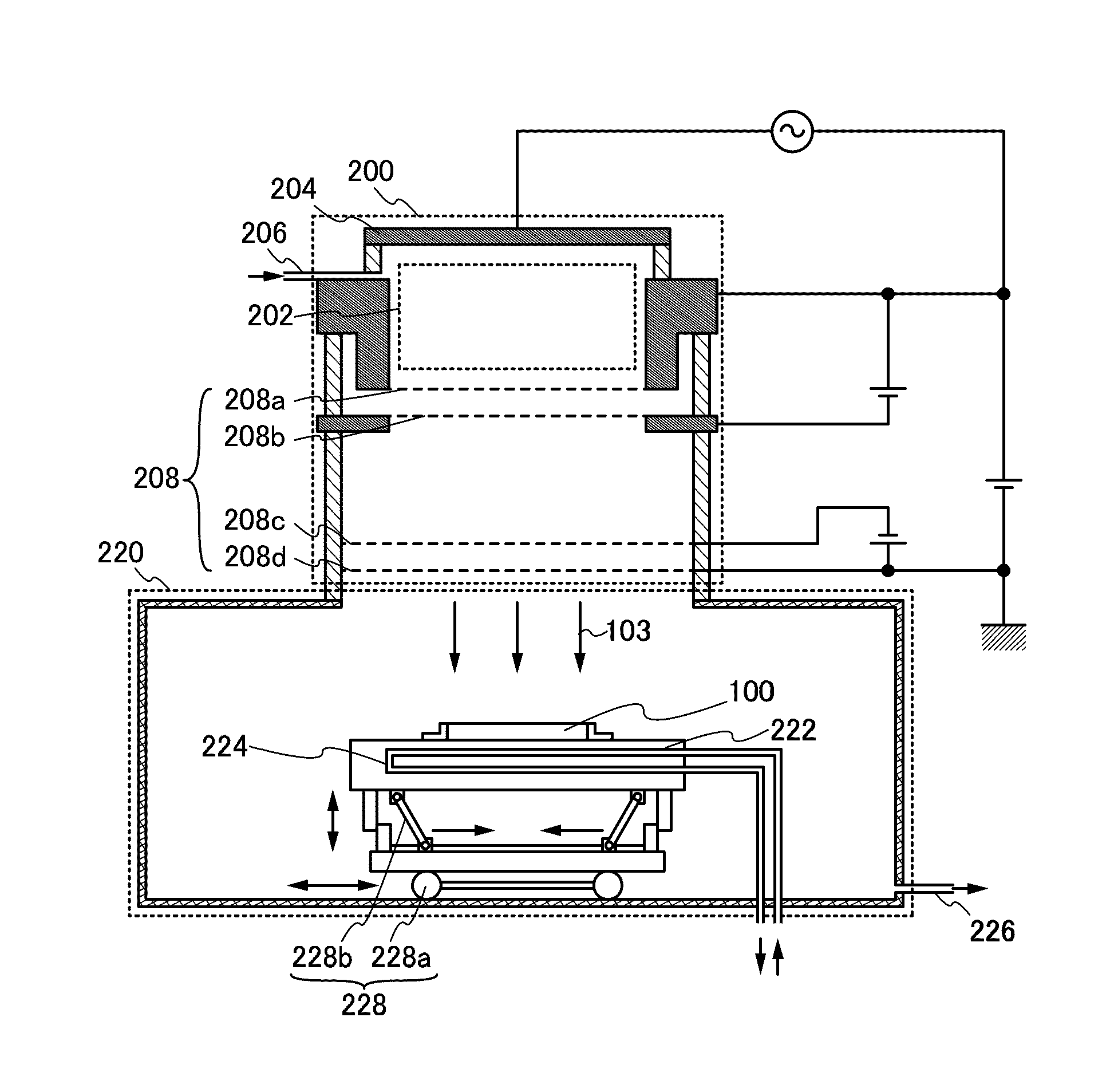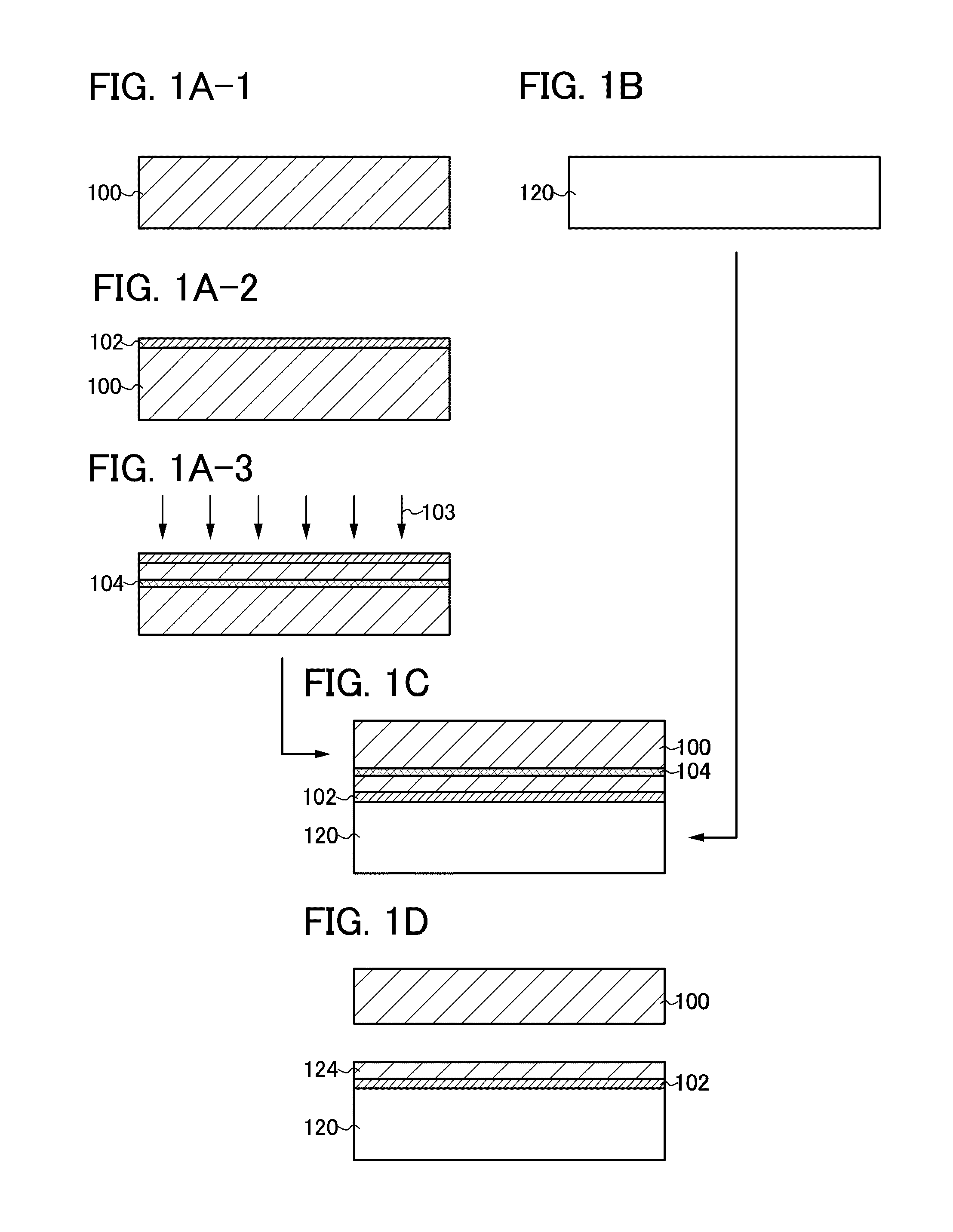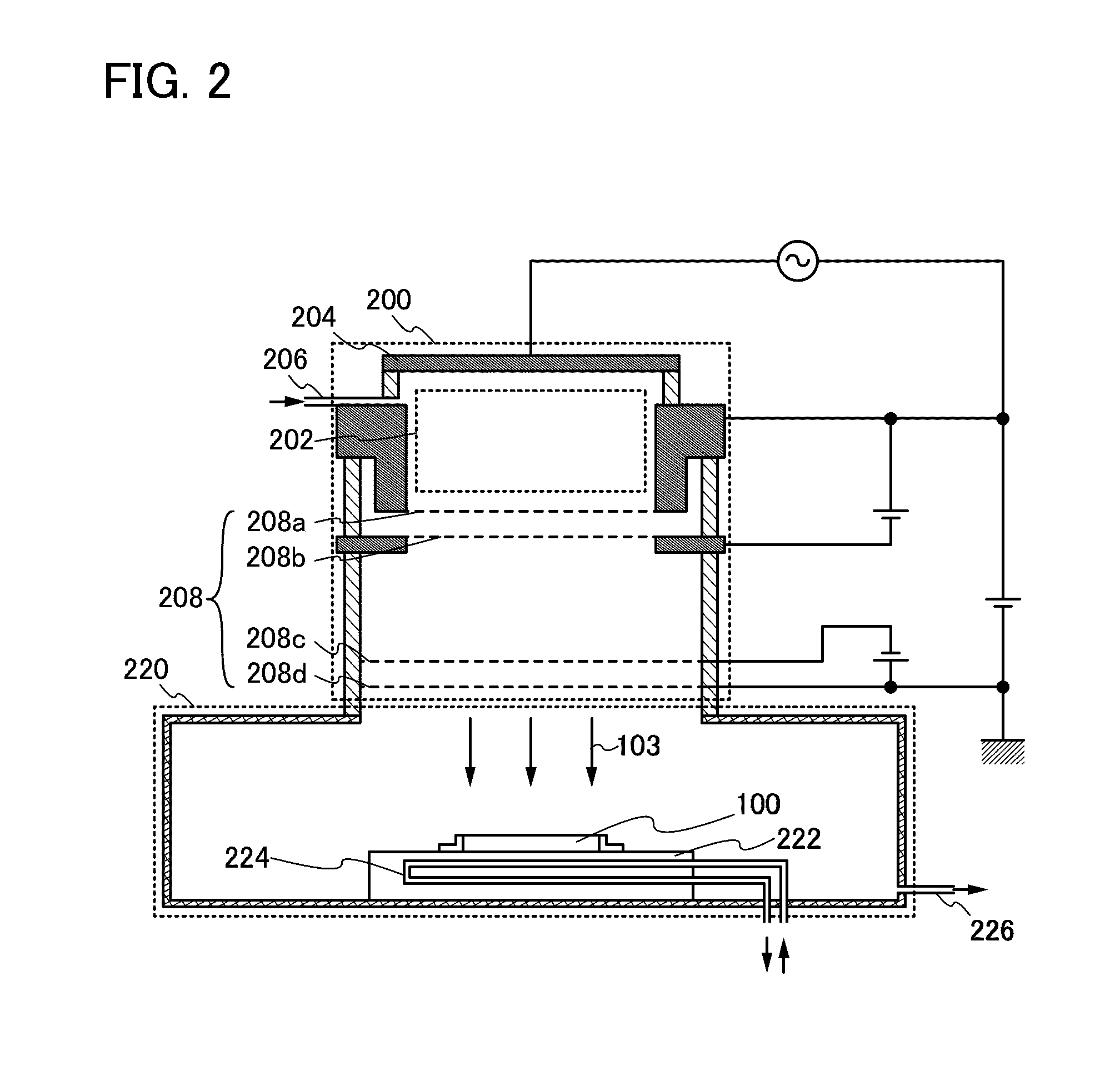Method for manufacturing SOI substrate
a technology of soi and substrate, which is applied in the direction of basic electric elements, electrical apparatus, semiconductor devices, etc., can solve the problems of remarkable processing time, temperature increase in accordance with ion irradiation, and difficult shortening processing time, so as to improve the planarity of the surface of a single crystal semiconductor layer after separation, and improve throughput. , the effect of improving the separation speed
- Summary
- Abstract
- Description
- Claims
- Application Information
AI Technical Summary
Benefits of technology
Problems solved by technology
Method used
Image
Examples
embodiment 1
[0034]In this embodiment, an example of a method for manufacturing an SOI substrate will be described with reference to drawings.
[0035]First, a single crystal semiconductor substrate 100 is prepared (see FIG. 1A-1).
[0036]As the single crystal semiconductor substrate 100, a single crystal semiconductor substrate formed using an element belonging to Group 14, such as a single crystal silicon substrate, a single crystal germanium substrate, or a single crystal silicon germanium substrate, can be used. Alternatively, a compound semiconductor substrate formed of gallium arsenide, indium phosphide, or the like may be used. The size of a commercial silicon substrate is typically 5 inches (125 mm) in diameter, 6 inches (150 mm) in diameter, 8 inches (200 mm) in diameter, 12 inches (300 mm) in diameter, and 16 inches (400 mm) in diameter, and a typical shape thereof is a circular shape. Note that the shape of the single crystal semiconductor substrate 100 is not limited to a circular shape, ...
embodiment 2
[0079]In this embodiment, a method for cooling the single crystal semiconductor substrate 100 in performing ion irradiation, which is different from that in the above embodiment, is described.
[0080]As described above, in the case where an ion doping method is used, a large area is irradiated with ions at a time; therefore, the temperature of the single crystal semiconductor substrate 100 is increased. Accordingly, as the ion irradiation time increases, the temperature of the single crystal semiconductor substrate 100 increases. That is, there is a large difference between the temperature of the single crystal semiconductor substrate 100 at the time when ion irradiation is started and the temperature of the single crystal semiconductor substrate 100 at the time when ion irradiation is completed.
[0081]Therefore, at the time when ion irradiation is started, thermal diffusion of the element derived from the added ions hardly occurs; however, as irradiation with the ions proceeds, the te...
embodiment 3
[0089]In this embodiment, in the manufacturing method described in any of the above embodiments, a method for bonding the single crystal semiconductor substrate 100 and the base substrate 120 is described in detail with reference to the drawings.
[0090]First, the single crystal semiconductor substrate 100 is prepared (see FIG. 3A-1). Note that it is preferable that the surface of the single crystal semiconductor substrate 100 be cleaned as appropriate in advance using a sulfuric acid / hydrogen peroxide mixture (SPM), an ammonium hydroxide / hydrogen peroxide mixture (APM), a hydrochloric acid / hydrogen peroxide mixture (HPM), diluted hydrogen fluoride (DHF), or the like in terms of removing contamination. Further, diluted hydrogen fluoride and ozone water may be discharged alternately to clean the single crystal semiconductor substrate 100.
[0091]Next, an oxide film 132 is formed on the surface of the single crystal semiconductor substrate 100 (see FIG. 3A-2).
[0092]As the oxide film 132, ...
PUM
 Login to view more
Login to view more Abstract
Description
Claims
Application Information
 Login to view more
Login to view more - R&D Engineer
- R&D Manager
- IP Professional
- Industry Leading Data Capabilities
- Powerful AI technology
- Patent DNA Extraction
Browse by: Latest US Patents, China's latest patents, Technical Efficacy Thesaurus, Application Domain, Technology Topic.
© 2024 PatSnap. All rights reserved.Legal|Privacy policy|Modern Slavery Act Transparency Statement|Sitemap



